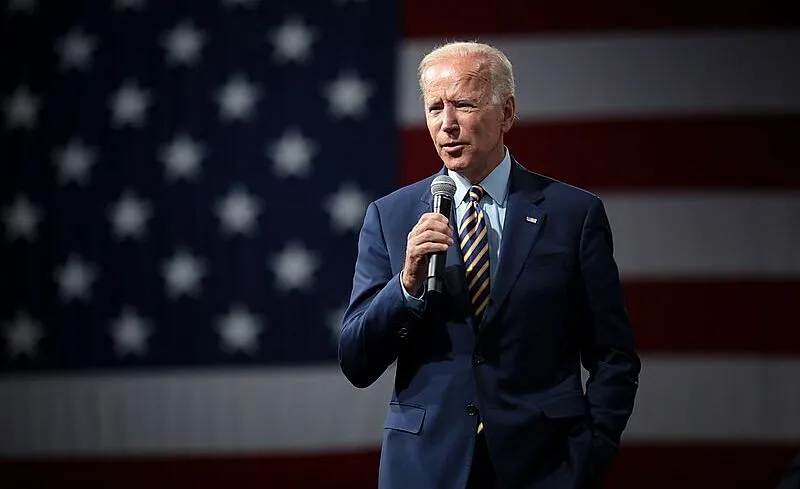America’s direct military engagement in Afghanistan is over after almost two decades. It has ended in strategic defeat. With its vast human and material resources America can absorb this failure and move ahead but defeat hurts and gives rise to anger and recrimination.
This is especially so when it terminates in chaos as witnessed for a fortnight at the Kabul airport. The fact that unsuccessful armed interventions seldom end neatly offers little solace. Political opponents sense an opportunity to strike while those overseeing the end of the enterprise defend their actions and policies. All this is happening in America; the vultures are circling over President Joe Biden and his administration who are in defensive mode.
After the last American aircraft had flown from Kabul airport Biden addressed the nation on August 31. The twenty-six -minute speech covered the past and sought to give an indication of America’s future policies and actions. It merits close attention from all those who are interested and concerned about Afghan developments but also from students of diplomacy and warfare; for, Biden dwelt on immediate issues but also on basic principles relating to foreign interventions of powerful countries. Historians may well judge this speech as one of the most important, if not the most significant, of Biden’s presidency despite it being difficult to currently assess how far it will go to assuage the sentiments of the American people. It is to the basic concepts of intervention in foreign lands and on the purposes of America’s attack on Afghanistan that I turn.
Biden emphasised the principle that military interventions must have “achievable goals” and that the focus should always be on the “national security interest of the United States of America”. These are entirely valid propositions. Statesmanship demands that any country undertaking a foreign armed enterprise should be aware of the end game. If it wades into a situation with shifting goals and without firm clarity of its fundamental objective it will always reap a bitter harvest. And naturally any foreign armed undertaking should only be to secure supreme security interests.
Biden also went to the heart of the purposes of America’s military undertaking in Afghanistan and how it shifted from its essential objective. He said “We saw a mission of counter terrorism in Afghanistan—getting the terrorists and stopping attacks—morph into a counterinsurgency, nation building—trying to create a democratic, cohesive and unified Afghanistan—something that has never been done over the many centuries of Afghanistan’s history”. Here, Biden focused on three different propositions: counter terrorism, counter insurgency, and nation building. This requires a measure of exploration though it should be mentioned that it is wrong to assess that Afghanistan lacked unity or cohesion.
America did not have any problems with the Taliban even after it took Kabul in September 1996. Their difficulties with it began after the Taliban leadership developed a nexus with al-Qaeda. Osama bin Ladin arrived in Afghanistan in the summer of 1996. He already had a reputation among some Afghans from the days of the anti-Soviet jihad. A close relationship began between him and Taliban leaders. From his Afghanistan base Osama bin Ladin started orchestrating attacks on American interests. At this stage, the Americans demanded that the Taliban should break contacts with al-Qaeda but did not receive a favourable response. They continued to put pressure on the Taliban through sanctions. Yet the Taliban did not yield. Till then the Americans did not truly consider the Taliban as terrorist though like the rest of the international community, barring three countries, they did not give diplomatic recognition to its regime.
Significantly, after 9/11 the Americans first asked the Taliban to break connections with al-Qaeda and hand over its leaders to them. It was only when it refused to do so that the Americans were left with no alternative but to attack Afghanistan to get to al Qaeda and in the process oust the Taliban from Afghanistan. It was at this stage that they began to really proclaim the Taliban as terrorists. However, even at this stage their main target was al-Qaeda. By the end of 2003 the Taliban began an insurgency against the Afghan Republic from their bases in Pakistan. It also began to attack American troops in Afghanistan.Once, the Taliban insurgency began the group became both terrorist and insurgent.
This situation continued till May 2011 when Osama bin Ladin was killed in a covert American military operation in Abbottabad, Pakistan. Biden noted in his speech “We delivered justice to bin Laden on May 2nd 2011—over a decade ago. Al Qaeda was eliminated”. He further said “We succeeded in what we set out to do in Afghanistan over a decade ago. Then we stayed for another decade. It was time to end this war”. Once the al-Qaeda, to use Biden’s words, was decimated with the killing of Osama bin Ladin the American approach to the Taliban began to change. There was greater emphasis given to its nature as insurgent. It is evident that in 2013 America took the decision to begin a process of opening up with the Taliban and its agreement with it took seven years to accomplish. The core component of that agreement was that the Taliban would not allow international terrorist groups to function in Afghanistan and America would withdraw its forces.
Clearly, in reaching this agreement directly with the Taliban and behind the back of Kabul the Americans virtually abandoned the nation building exercise that they had undertaken. In any event, as I have explored in earlier columns, such an exercise has to be undertaken indigenously. Only then it can be enduring. Now the question is: have the Taliban understood that its government cannot achieve complete international recognition if it seeks to revert to the excesses of its 1990s regime?







